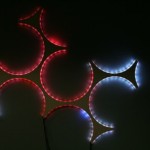Hao Liu, Jun Hu, Matthias Rauterberg
ABSTRACT
Travel by air, especially long distance, the combination of long flight duration, limited space and an unusual cabin environment causes physical and psychological discomfort and even stress for a large group of passengers. In-flight entertainment systems are commonly installed on the long haul flights to increase the passenger’s comfort level. However, the current installed and commercially available in-flight entertainment systems do not explore how the entertainment services can be adapted to reduce the passenger’s stress level systematically and intelligently. Also, these systems are designed and implemented based on a pre-set concept of what customer likes and requires as a homogeneous passenger group that has similar tastes and desires. In this paper, we present a new entertainment adaptive framework AIRSF for stress free air travel. Compared to the current in-flight entertainment framework, it can regulate the passenger’s physical and psychological states at comfort physical and psychological states with context-aware and personalized stress reduction entertainment service provision intelligently; What is more, based on the passenger’s bio and explicit feedback, it can automatically track, learn and adapt to the passenger’s preferences.
Categories and Subject Descriptors
H.1.2 [Models and Principles]: User/Machine Systems – Human factors, Human information processing.
General Terms
Design, human Factors, languages.
Keywords
Adaptive framework, context-awareness, in-flight entertainment.
FULLTEXT: PDF HTML REFERENCE: BibTeX EndNote
DOI: 10.1145/1501750.1501793

